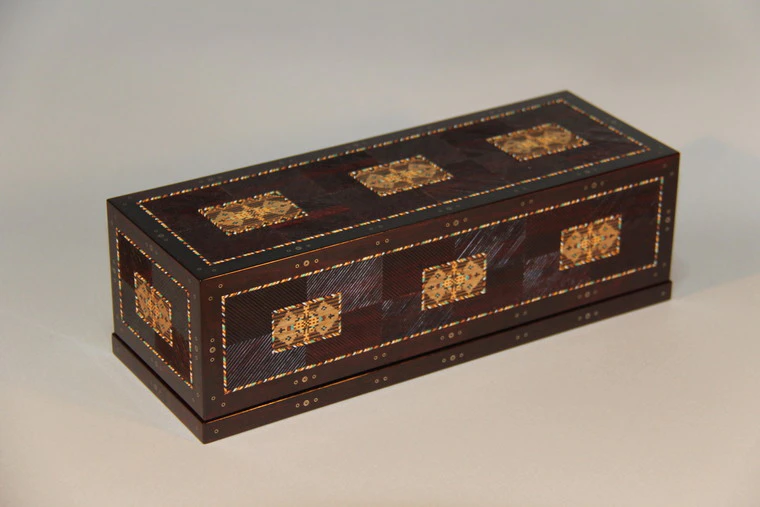Box of Koki-shitan Wood with Marquetry Decoration
H 9.7 x W 31.0 x D 11.0 cm,Year.2002- according to today's currency rate
- shipping fees not included
Shinichi Miura
1958 -- Wood and Bamboo
-
Price Range
¥1,000,000 - 5,000,000
Info
The prices of the artworks on Gallery Japan are determined by the artists themselves and are published directly on the website.
close - Awards at Japan Kōgei Assoc. Exhibitions : 4
About the Artwork
Marquetry decoration of red sandalwood, ivory, boxwood, black persimmon wood, dyed horn, gold, silver etc. applied onto the straight grain zelkova wood base with animal glue. The inside is mainly made of boxwood with the marquetry lines inlaid. Finished with wiped urushi so as not to ruin the natural color of the material.
Description
-
CategoryWood and Bamboo
-
DimensionsH 9.7 x W 31.0 x D 11.0 cm
-
Year presented2002
-
Paulownia BoxIncluded
-
InstructionsAvoid direct exposure to the wind from the air conditioner.
Avoid close lighting.
Do not wipe with a wet cloth.
Techniques Used
Wood joinery
In wood joinery (sashimono), wood boards are cut into panels with care to how the grain patterns will fit together in the final piece. The wooden panels are then cut or carved to create interlocking joints. These joints, which are the key feature of wood joinery, make it possible to connect boards at right angles to produce boxes and other articles. Wood joinery is assembled without the use of nails or any other metal hardware.
Mokuga wood decoration
Mokuga (“wood picture”) is a decorative technique in which slices of wood several millimeters thick are cut into geometric pieces such as rectangles or triangles and then attached to the surface of an object to create a design. Complicated works may use over one thousand small parts, carefully arranged with attention to the alignment of the grain.

